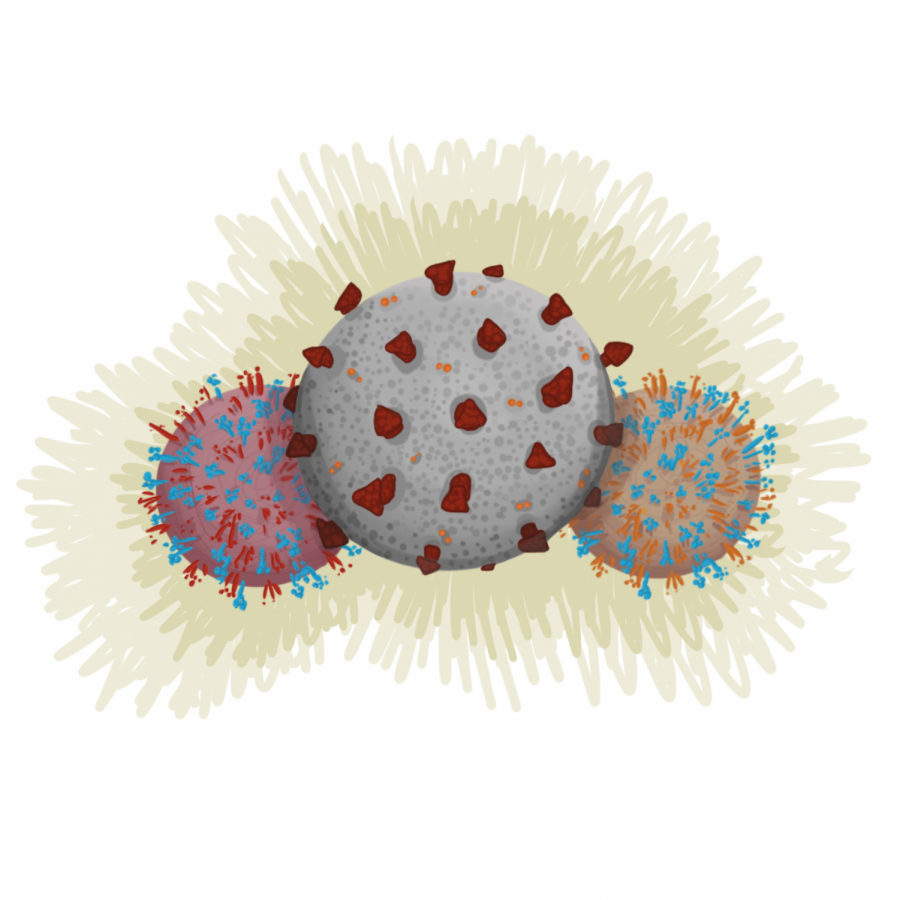A Look at the Coronavirus in the Context of Other Pandemics in History
As of April 30th, there are over three million confirmed cases of the coronavirus worldwide.
April 30, 2020
Worldwide, cases of the novel coronavirus have soared past three million, killing over 230,000, and have caused one of the worst weeks for the stock market as a whole since the 2008 financial recession. Over 700,000 jobs have been lost in the US alone, breaking a decade-long trend of job gains. While these numbers are unprecedented and frightening, COVID-19 is only the latest in a long line of contagious viruses and bacteria that have forced the world through major changes over the course of history.
Since the earliest days of civilization, plague and diseases have been one of the greatest threats to humanity. The scale and spread of these diseases increased dramatically after the change from nomad tribes to agriculture-based towns. Epidemics such as malaria, smallpox, influenza, tuberculosis, and others first appeared during the early years of globalization as widespread trade in the late Medieval era created new opportunities for human and animal interactions. Despite this persistence of disease and pandemics throughout history, there is one constant trend over time: death rates are gradually decreasing. The decreasing trend is the result of a greater understanding of the factors that incubate viruses as well as significant medical and healthcare advances in the past century.
Quarantine, one of the most important safety practices, began in 14th-century Venice. In an effort to protect coastal cities from plague-like pandemics, port authorities ordered ships arriving at the Italian port to anchor for 40 days before landing. The word quarantine comes from the Italian words for 40 days, quaranta giorni.
Nearly two years have passed since the centennial anniversary of the most deadly virus to arise in the last one hundred years, a virus that lasted only a few months but resulted in the deaths of more than 50 million people. For years, experts struggled to pinpoint exactly what had caused so many people’s deaths in what we now know of as influenza—it took more than a decade for two British microbiologists to recognize that the tragedy was a result of a new class of diseases we now call viruses, and it was not until 1940 that humanity finally managed to model the deadly flu virus. In contrast, just two weeks after the COVID-19 outbreak, a team of Chinese scientists diagnosed the infectious agent that was causing respiratory illness in patients as a coronavirus, deciphered its genome, and immediately shared the information with the global scientific community. Thanks to these Chinese scientists, pharma companies around the world have discovered important information on the path to making a vaccine. Though scientists are far from finding a vaccine for the novel coronavirus, COVID-19 is the fastest identified and modeled virus in the history of diseases.
The third most deadly virus in the last century took place in Southeast Asia, commonly called the “Hong Kong Flu.” H3N2, its scientific name, was first reported on July 13th, 1968 in Hong Kong. Only 17 days after the original diagnosis, outbreaks sprouted in Vietnam, Malaysia, and Singapore. Within three months, the virus had daily victims in Europe and the US. Despite its mortality rate of 0.5%, over a million people died because security measures were not taken fast enough. Fortunately for the modern world, it seems leaders the world over now have understood the severity of viruses, as they now take action to shut down entire cities and countries in record times to keep the world at large as safe as possible.
To track a disease’s rate of infection, scientists use a measure called the reproduction number, also known as R0. This number communicates how many people each sick person will infect on average. COVID-19 is at the center of the list with an R0 of 2.5, meaning that, on average, a sick person will infect about 2 to 3 other people in their surroundings. Using this newly developed system of measurement, we are able to know how severe measures we need to take to prevent the spread of a virus.
Comparing the current coronavirus epidemic with older transmissible diseases is a useful process. It equips us with both hope and gratitude for modern medicine as well as lessons for a calm and effective response to epidemics and pandemics. Fortunately, we live in a more informed world, as we now have the resources to learn about staying safe and for preventing/mitigating this epidemic.










